| How-To - Wheels and Tires
Tires, tires, tires! We all own 'em, drive on 'em, and try to smoke 'em, but how many of us know how to read them and understand what that sidewall is trying to tell us? If many of you just put your hand down, you're not alone!
In the old days, it was pretty easy to pick out a set of skins for your truck, but that was back in the heyday of bias-ply tires, whereas today there is a mind-boggling amount of size choices in modern radial tires, especially with the popular rise of larger-diameter wheels in the last 10 years. But what's the difference between bias-ply and radial tires, you ask?
For those too young to know what bias-ply tires are and to refresh the rest of us, we took this question and many more to the antique and classic tire gurus at Coker Tire. They told us that the main difference between bias-ply and radial tires lies in the tire's construction. The basic carcass of all tires is made up of layers of rubber-permeated fabric. These layers are referred to as plies, and the most common fabric used in tires today is polyester. The method, or the "direction" these plies are applied, with relation to each other and to the centerline of the tread, differentiates between a "bias" and a "radial" tire. The plies on a bias tire run approximately 45 degrees to the centerline of the tread, alternating in direction with each layer; thus, they crisscross or run in 90-degree angles to each other. This design or style of construction was common on all tires provided as original equipment on U.S.- built cars until the early '70s. The plies on a radial tire run 90 degrees to the centerline of the tire and basically overlap instead of crisscrossing. This new radial design, actually developed during World War II, allows the tire's sidewalls to be more flexible, which provides less rolling resistance, providing better gas mileage and longer tread life.
 This flex also promotes better adherence to the road, thus better handling on both wet and dry surfaces. The radial tire found early acceptance in Europe, and finally became standard equipment on most U.S. passenger cars by '74.
This flex also promotes better adherence to the road, thus better handling on both wet and dry surfaces. The radial tire found early acceptance in Europe, and finally became standard equipment on most U.S. passenger cars by '74.
A physical comparison of the older-style bias-ply tire and the modern-style radial-ply tire reflects a change in aspect ratio that is seen in the relationship of the tire cavity's height and width. The cavity of the earliest tires was basically round, which gave them an aspect ratio of 100 (inflate an inner tube outside the tire and its cavity is basically round; the height and the width of the cavity are the same). Through the years, most bias-ply tires had an 82 aspect ratio, meaning the height of the cavity was 82 percent of the width, wider than the earliest tires but still somewhat tall and skinny compared to radials. Profiles changed in the mid-'60s to 78 and even 70 aspect ratios, providing lower-profile tires with more tread face on the road and shorter sidewalls, which gave them a little firmer ride but more responsive handling. When radial tires came on the scene, they were built with the lower aspect ratios, therefore we generally think of bias-ply tires as tall and skinny, while radial tires are considered short and wide.
When radial tires came on the scene, they were built with the lower aspect ratios, therefore we generally think of bias-ply tires as tall and skinny, while radial tires are considered short and wide.
As the aspect ratios decreased (tires became shorter and wider), tire engineers determined that belts could be layered under the tread to provide better tread face integrity. These belts were originally constructed of rubber-permeated fiberglass mesh; we referred to them as fiberglass belts, then later steel mesh, which we refer to today as steel belts. Bias-ply tires were belted during the '60s, particularly on the lower-aspect-ratio performance tires, but for the most part we only correlate belted tires, more specifically the steel belted tire, with modern radials.
Coker goes on to tell us that bias-ply tires made today are far superior to those of yesteryear thanks to modern manufacturing and materials. And believe it or not, there are diehard bias-ply tire owners due to the fact that there isn't a radial tire that matches the look of them for restoration and period-style customs and hot rods.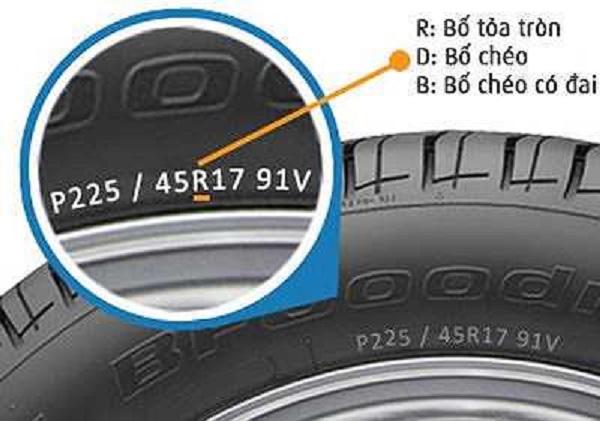 Our own Rob Fortier wouldn't be caught dead with radials on his '53 Chevy truck because the aesthetics of the tire are as important to its overall look as the right paint or upholstery job. The most common "big" decisions that need to be made when it comes to buying bias-ply tires are figuring out if you want a black or a whitewall tire, and if you choose the latter, how wide of a whitewall you want. Of course, Coker has just about all these bases covered for you.
Our own Rob Fortier wouldn't be caught dead with radials on his '53 Chevy truck because the aesthetics of the tire are as important to its overall look as the right paint or upholstery job. The most common "big" decisions that need to be made when it comes to buying bias-ply tires are figuring out if you want a black or a whitewall tire, and if you choose the latter, how wide of a whitewall you want. Of course, Coker has just about all these bases covered for you.
If it were only that simple when it comes to choosing modern radial tires! Radial tires have more numbers and codes on their sidewalls than you can shake a tire iron at, but what do they all mean, and how do you know you are buying a "good" tire? Every tire carries a DOT (Department of Transportation) serial number (see pg. 28) and needs to meet certain requirements before it can legally be used on the highways, but what differentiates a cheap tire from the more expensive ones in a comparable size? Mostly the materials or rubber compounds they are made of.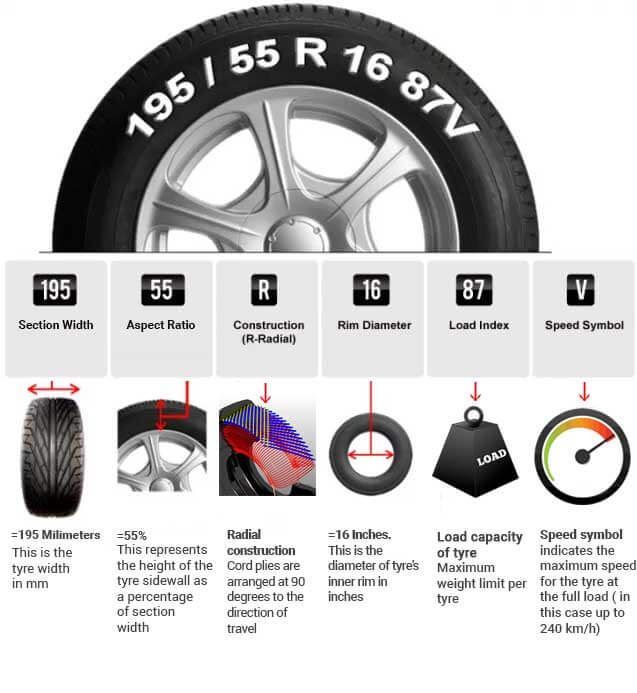 Different compounds make a tire softer or stickier, which gives it good traction but is prone to wear out quicker, where a "harder" tire could last longer but wouldn't offer the same performance characteristics when it comes to cornering, traction, and braking. There is a government rating system called UTQG, or Uniform Tire Quality Grading system, that oddly enough isn't required on all tires, just P235/75/R15 and smaller, and isn't strictly enforced for whatever reason. However, the UTQG system does help illustrate the differences in tire quality and is rated as follows:
Different compounds make a tire softer or stickier, which gives it good traction but is prone to wear out quicker, where a "harder" tire could last longer but wouldn't offer the same performance characteristics when it comes to cornering, traction, and braking. There is a government rating system called UTQG, or Uniform Tire Quality Grading system, that oddly enough isn't required on all tires, just P235/75/R15 and smaller, and isn't strictly enforced for whatever reason. However, the UTQG system does help illustrate the differences in tire quality and is rated as follows:
TREADWEARThe treadwear grade is a comparative rating based on the wear rate of the tire when tested under controlled conditions on a specified government test course. For example, a tire graded 150 would perform one and a half times as well on the government course as a tire graded 100. The relative performance of tires depends upon the actual conditions of their use, however, and may depart significantly from the norm due to a person's driving habits, maintenance, and differences in roads as well as climate.
TRACTIONThe traction grades from highest to lowest are AA, A, B, and C, and they represent the tire's ability to stop on wet pavement as measured under controlled conditions on specified government test surfaces of asphalt and concrete. A tire marked "C" may have poor traction performance. The traction grade assigned to tires is based on straightline braking traction tests and does not include cornering traction. In a straightline stop, the "AA" graded tire should allow you to stop your car on wet roads in a shorter distance than tires graded "A," "B," or "C," and obviously tires graded "C" offer the least traction on wet roads.
TEMPERATUREThe temperature grades are A (the highest), B, and C, representing the tire's resistance to the generation of heat and its ability to dissipate heat when tested under controlled conditions on a specified indoor laboratory test wheel. Grade C corresponds to a level of performance that all passenger car tires must meet under the Federal Motor Vehicle Safety Standard No. 109. Grades A and B represent higher levels of performance on the laboratory test wheel than the minimum required by law and are cooler running tires than those rated Grade C. Sustained high temperatures can cause the tire material to degenerate, and excessive temperatures, underinflation, and overloading can lead to blowouts and tread separations. If the vehicle and tires are maintained and used properly, they should perform safely and reliably when run at the speed limit, even in very hot weather.
109. Grades A and B represent higher levels of performance on the laboratory test wheel than the minimum required by law and are cooler running tires than those rated Grade C. Sustained high temperatures can cause the tire material to degenerate, and excessive temperatures, underinflation, and overloading can lead to blowouts and tread separations. If the vehicle and tires are maintained and used properly, they should perform safely and reliably when run at the speed limit, even in very hot weather.
A tire's size is usually preceded with a letter designation that shows what that tire is intended to be used for. The two most common service types are "P" and "LT" and are seen on a tire's side, like this on the tires on my '72 C-10 P225/75R15 or LT225/75R15. Most radial tire sizes are given in a metric measurement, and the "P" is the metric designation for passenger car and light truck tires. "LT" is also a light truck tire, but is usually given a higher load index rating. A "T" prefix means the tire is for temporary use as a spare and shouldn't be used for regular driving. There are other service type ratings, but most are for super heavy-duty applications that most of us will never have to know.
A "T" prefix means the tire is for temporary use as a spare and shouldn't be used for regular driving. There are other service type ratings, but most are for super heavy-duty applications that most of us will never have to know.
The first three digits of a radial tire's size are the section width given in millimeters (mm), which is the distance between the widest points of the inside to the outside of the tire's sidewalls when mounted on the proper wheel and inflated to the required psi. To convert this into an inch measurement, we divide the section width in mm by 25.4 (mm per inch), so the same P225/75R15 tire has a section width of 225mm, or roughly 8.88 inches.
The next measurement in the size is the sidewall aspect ratio or sidewall height from the wheel edge to the tread. This is a two-digit number that tells us the height of the sidewall in a percentage of the section width, which all sounds confusing, but it works like this: The same P225/75R15 tire has an aspect ratio of 75, which is 75 percent of the 225mm section width, or 168.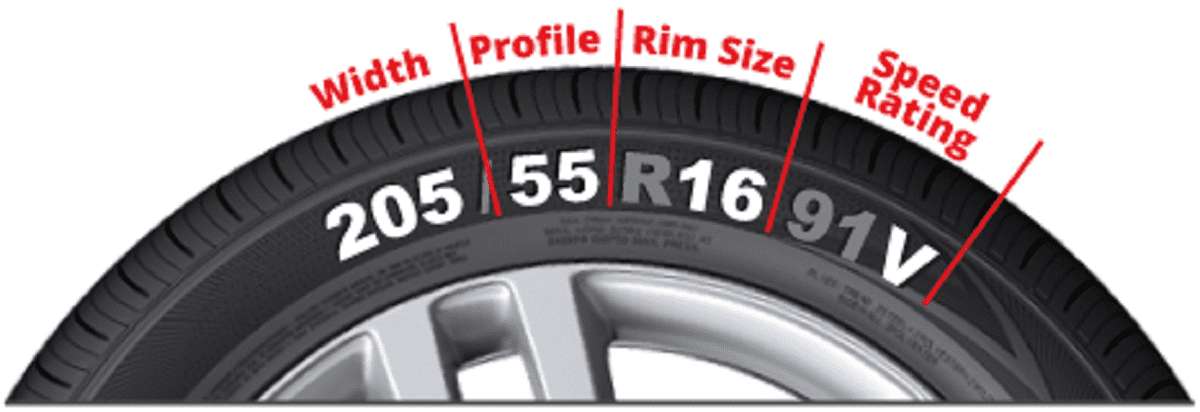 75mm/6.64 inches using the equation from before. Got it so far?
75mm/6.64 inches using the equation from before. Got it so far?
Next in the size is almost always an "R," which tells us the tire's internal construction. The "R" stands for radial. A "D" would mean diagonal or bias-ply, and there may be a few bias-ply-belted tires out there with a "B" to designate them.
And finally, the last two-digit number in the size is the diameter of the wheel it's intended for, so our P225/75R15 should only be mounted on a 15-inch wheel. If we add the wheel diameter to twice the aspect ratio, we get the diameter of the tire when it's mounted and inflated properly, which should go like this: 15 + (6.6 x 2) = 28.2 inches.
SPEED RATINGAnother rating that tires carry is a speed rating. The speed rating is also designated with a letter and starts with "M" and goes up to "Z." An "M" rating is deemed safe up to 81 mph and is usually only found on space-saver spare tires, while a "Z" rating is good for 149 mph, which consequently isn't the highest speed rating. See, speed-rating tires started in Europe, where some of the roads had/have no speed limits and allowed high-speed driving, and soon there was a need for tires that matched the performance of the fast cars that were being built and driven on these roads. This also accounts for the unusual mph increment ratings because the speed rating system was set up in kilometers per hour. The system was also set up at a time when the world scoffed at the idea that any car would break 149 mph/240 kph, so they skipped from "V" straight to "Z," with the later being 149 mph and up. How much farther up was kind of a gray area. In modern times with our new technology, there are obviously vehicles that surpass the "Z" rating, so "W" and "Y" were added, with "Y" now being the top rating at 186 mph/300 kph. For the rest of the speed rating breakdown, see the chart.
See, speed-rating tires started in Europe, where some of the roads had/have no speed limits and allowed high-speed driving, and soon there was a need for tires that matched the performance of the fast cars that were being built and driven on these roads. This also accounts for the unusual mph increment ratings because the speed rating system was set up in kilometers per hour. The system was also set up at a time when the world scoffed at the idea that any car would break 149 mph/240 kph, so they skipped from "V" straight to "Z," with the later being 149 mph and up. How much farther up was kind of a gray area. In modern times with our new technology, there are obviously vehicles that surpass the "Z" rating, so "W" and "Y" were added, with "Y" now being the top rating at 186 mph/300 kph. For the rest of the speed rating breakdown, see the chart.
LOAD INDEXPreceding a tire's speed rating on the sidewall is a two- or three-digit number that shows us its load index, or how much weight the tire can safely carry when used properly. Of course, you want to get tires with the right load index for your truck, which typically runs from 80-110. In newer vehicles, the OEM-recommended load index for the vehicle is on a sticker in the driver's doorjamb along with psi recommendations. There you have it. This covers most of the pertinent bases when it comes to understanding tire basics. It may be more than you need or want to know about tires, but armed with all this info, you might just be able to stump the kid down at the tire store next time! And if you want to know more or are looking for.
Of course, you want to get tires with the right load index for your truck, which typically runs from 80-110. In newer vehicles, the OEM-recommended load index for the vehicle is on a sticker in the driver's doorjamb along with psi recommendations. There you have it. This covers most of the pertinent bases when it comes to understanding tire basics. It may be more than you need or want to know about tires, but armed with all this info, you might just be able to stump the kid down at the tire store next time! And if you want to know more or are looking for.
| BIAS-PLY TO RADIAL CONVERSION | |||||
|---|---|---|---|---|---|
| P-75 Series | 83-Series Bias | P-70 Series | 80-Series Metric | 78-Series Alpha | P-75 Series Rim Width |
| P195/75R14 | 700-14, 735-14 | P205/70R14 | 185-14 | E78-14 | 5-7" |
| P205/75R14 | 750-14, 775-14 | P215/70R14 | 195-14 | F78-14 | 5-7. 5" 5" |
| P215/75R14 | 800-14, 825-14 | P225/70R14 | 205-14 | G78-14 | 5.5-7.5" |
| P225/75R14 | 850-14, 855-14 | P235/70R14 | 215-14 | H78-14 | 6-8" |
| P235/75R14 | 900-14, 950-14 | P245/70R14 | 225-14 | J78-14 | 6-9" |
| P165/75R15 | 560-15, 600-15 | P175/70R15 | 165-15 | A78-15 | 4.5-6" |
| P195/75R15 | 640-15, 735-15 | P205/70R15 | 175-15 | E78-15 | 5-7" |
| P205/75R15 | 670-15, 775-15 | P215/70R15 | 185-15 | F78-15 | 5-7.5" |
| P215/75R15 | 710-15, 825-15 | P225/70R15 | 205-15 | G78-15 | 5.5-7.5" |
| P225/75R15 | 760-15, 855-15 | P235/70R15 | 215-15 | H78-15 | 6-8" |
| P235/75R15 | 820-15, 900-15 | P255/70R15 | 230-15 | L78-15 | 6-8.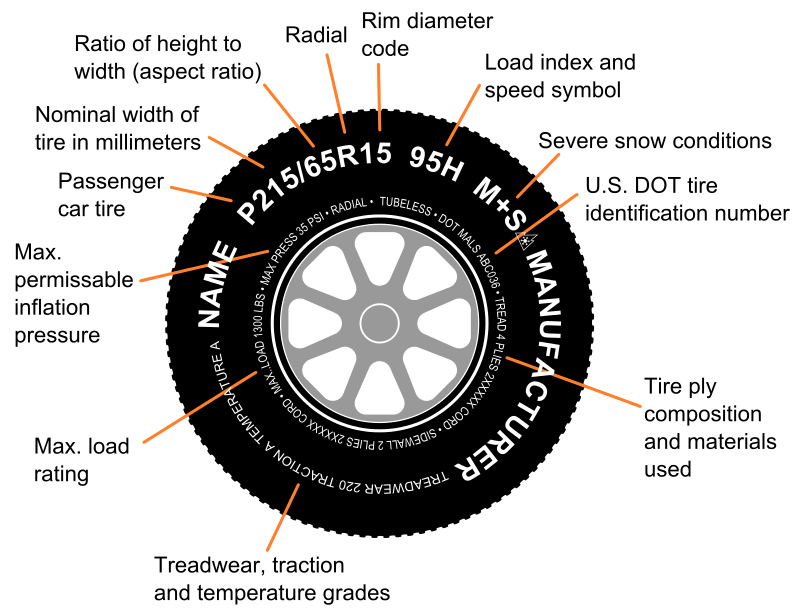 5" 5" |
| SPEED RATINGS | |||
|---|---|---|---|
| M | 81 mph | 130 km/h | temporary spare tires |
| N | 87 mph | 140km/h | temporary spare tires |
| P | 93 mph | 150 km/h | |
| Q | 99 mph | 160 km/h | |
| R | 106 mph | 170 km/h | H.D. light truck tires |
| S | 112 mph | 180 km/h | |
| T | 118 mph | 190 km/h | |
| U | 124 mph | 200 km/h | |
| H | 130 mph | 210 km/h | |
| Z(R) or V | 149 mph | 240 km/h | |
| W | 168 mph | 270 km/h | exotic sports cars |
| Y | 186 mph | 300 km/h | exotic sports cars |
| Load Index | Pounds |
| 71 | 761 |
| 72 | 783 |
| 73 | 805 |
| 74 | 827 |
| 75 | 853 |
| 76 | 882 |
| 77 | 908 |
| 78 | 937 |
| 79 | 963 |
| 80 | 992 |
| 81 | 1,019 |
| 82 | 1,047 |
| 83 | 1,074 |
| 84 | 1,102 |
| 85 | 1,135 |
| 86 | 1,168 |
| 87 | 1,201 |
| 88 | 1,235 |
| 89 | 1,279 |
| 90 | 1,323 |
| 91 | 1,356 |
| 92 | 1,389 |
| 93 | 1,433 |
| 94 | 1,477 |
| 95 | 1,521 |
| 96 | 1,565 |
| 97 | 1,609 |
| 98 | 1,653 |
| 99 | 1,709 |
| 100 | 1,764 |
| 101 | 1,819 |
| 102 | 1,874 |
| 103 | 1,929 |
| 104 | 1,984 |
| 105 | 2,039 |
| 106 | 2,094 |
| 107 | 2,149 |
| 108 | 2,205 |
| 109 | 2,271 |
| 110 | 2,337 |
In this month’s column, I’m going to cover a topic that seems straightforward, but is widely misunderstood throughout the collector car world.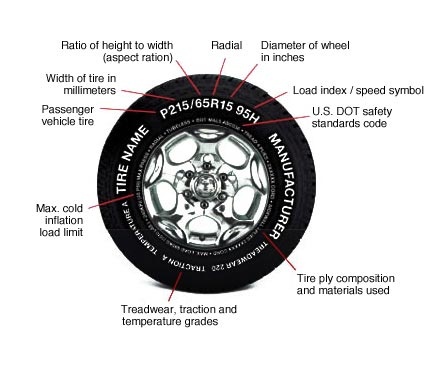 That topic is the evolution of tire sizing. Standards have changed over the past 100 years of tire manufacturing, and the result is multiple versions of sizing terminology. I’m going to cover the basics here, but you can always log onto our website for more in-depth information. For an expanded version of this tire size tutorial, go to CokerTire.com/tire-size.
That topic is the evolution of tire sizing. Standards have changed over the past 100 years of tire manufacturing, and the result is multiple versions of sizing terminology. I’m going to cover the basics here, but you can always log onto our website for more in-depth information. For an expanded version of this tire size tutorial, go to CokerTire.com/tire-size.
There are three common types of tire sizing from the 1920s through the modern era: numeric, alphanumeric and P-metric. Uncommon forms of tire sizing are used for high-pressure tires (Brass Era), racing tires, vintage metric tires and certain types of off-road truck tires. Let’s cover the three most common tire sizing styles.
Numeric sizing is most common on bias-ply tires manufactured from the late 1920s through the late 1960s. This started with the tires that were marketed as Balloon tires, due to their lower air pressure and soft ride, compared to the earlier high-pressure tires of the 1900s and 1910s. Numeric sizing leads off with the tire’s approximate section width, listed in inches, and then features the rim diameter (ex. 6.70-15 or 8.00-14).
6.70-15 or 8.00-14).
From the 1930s onward, American cars gradually transitioned into smaller wheel diameters, while increasing tire and wheel width. Any tire size that ends with a zero, such as 6.70-15 or 7.10-15, featured an approximately 90% aspect ratio. Any bias-ply tire ending in the number five, such as 6.95-14, 7.75-15, etc., featured an 80% to 84% aspect ratio. We continue to use numeric sizing in most of our bias-ply tires, as well as our bias-look radials. For radial tires, we simply add the letter “R” in place of the hyphen (ex. 6.70R15).
Alphanumeric sizing became common in 1967 and was the industry standard only a few years later. This type of sizing takes the guess work out of the aspect ratio, but it creates some guess work on the tire’s overall width. The size starts with a letter, which is the tire’s load range. The higher the letter, the larger the tire. A78-13 is an example of a very small tire for an economy car, and L78-15 is an example of a large tire for a Cadillac. The two-digit number after the load range rating is the aspect ratio. The introduction of alphanumeric tires also saw the introduction of smaller aspect ratios, and shorter sidewalls. The 78 series was common, but 70 series and 60 series came shortly after.
The two-digit number after the load range rating is the aspect ratio. The introduction of alphanumeric tires also saw the introduction of smaller aspect ratios, and shorter sidewalls. The 78 series was common, but 70 series and 60 series came shortly after.
The muscle car era saw creative usage of alphanumeric tires, including the Firestone Wide Oval. It was available in redline originally and then later in raised white letter. Popular sizes for the Firestone Wide Oval included F70-14 and G70-15. Aftermarket tire companies, such as Pro Trac tires, offered custom alphanumeric sizes, such as N50-15, an enormous tire that was typically used on the back of modified muscle cars. Radial tires were introduced to American markets in the late 1960s and became original equipment offerings in the mid-1970s. The alphanumeric sizing remained for a short while, but an “R” was added after the load rating (ex. LR78-15).
The most current form of tire sizing is P-Metric. This sizing nomenclature can be confusing because the section width is listed in millimeters, the aspect ratio is listed as a percentage, and the wheel diameter is most often listed in inches.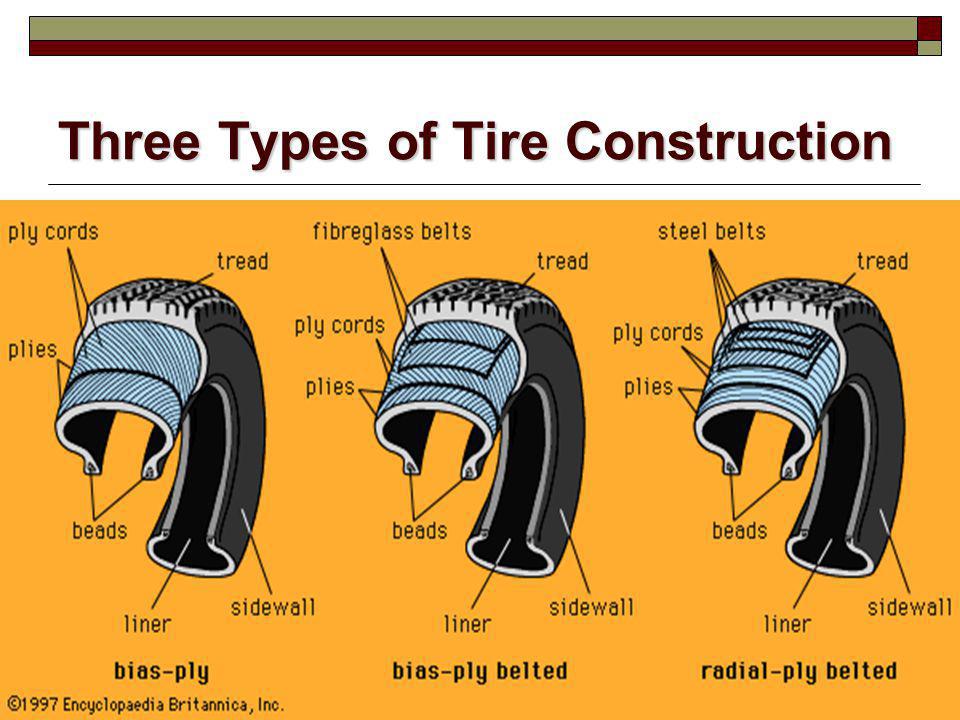 For example, a P205/75R15 tire features a section width of 205 millimeters and a sidewall that is 75% of that width. The “R” tells us it’s a radial, and the 15 indicates a 15-inch wheel diameter. This has been the industry standard in the United States since the 1970s, but the idea for this metric size came a couple decades earlier in Europe. British sports cars featured tires such as 165R15, dating back to the 1950s and 1960s. You’ll notice that there is no aspect ratio designation in this example. When a size is listed with only the section width and rim diameter, you are to assume that it features an 80% aspect ratio.
For example, a P205/75R15 tire features a section width of 205 millimeters and a sidewall that is 75% of that width. The “R” tells us it’s a radial, and the 15 indicates a 15-inch wheel diameter. This has been the industry standard in the United States since the 1970s, but the idea for this metric size came a couple decades earlier in Europe. British sports cars featured tires such as 165R15, dating back to the 1950s and 1960s. You’ll notice that there is no aspect ratio designation in this example. When a size is listed with only the section width and rim diameter, you are to assume that it features an 80% aspect ratio.
P-Metric radial tires are a common replacement for original bias-ply tires. In the case of 1950s classics, we most often suggest a 205/75R15 for cars that originally came with a 6.70-15 bias-ply tire. We also use 205/75R15 radials as a cross reference to original 7.75-15 Corvette tires. We’re proud to offer thousands of tires for collector cars of all ages. We have new product lines being added regularly, expanding our list of applications and potential customers. We’ve recently introduced new product lines in the vintage sports car market, which I plan to cover in a future column.
We’ve recently introduced new product lines in the vintage sports car market, which I plan to cover in a future column.
There are several methods to indicate the size and parameters of a tire, some manufacturers use sizes in inches, some in millimeters, and some even use both sizes. . The examples below will help you define the parameters yourself.
1. Tire width (cross-sectional width)
2. Tire height
3. Cross-sectional height
4. Rim diameter
5. Tire outer diameter
Example: 3.00-4, 3.50-6, 4.00-8, 5.20-10, 6.00-12….The first number (3.00) indicates the tire width. “-” indicates that the tire is bias-ply (a radial design would be R). The last digit (4) indicates the bore diameter in inches. So a 3.00-4 tire fits a 4" rim, is 3" wide, and has a diagonal design.
Example: 6-12, 7-14, 8-16, 9. 5-18…
5-18…
Same as above, but without the (.00) in the first part of the size. All dimensions are in inches. It is important that tires with similar sizes may not be compatible - a tire with parameters 6.00-12 can be very different from a tire 6-12. If you doubt the definition of compatibility - contact the managers of Promtekhnika.
Example: 4.10/3.50-4, 4.10/3.50-6, 5.30/4.50-6…
This size consists of 4 parts. The first digit (4.10) indicates the tire width. The second (3.50) indicates the height of the tire. The third digit (4) indicates the fit diameter of the tire. “-” refers to the diagonal design of the tire. So a 4.10/3.50-4 tire is 4.1" wide, 3.5" high, fits 4" rims, and has a diagonal design.
Example: 11x4.00-4, 13x5.00-6, 18x8.50-8, 25x12.00-9…
The first digit (11) is the outside diameter of the tire in inches. The second number (4.00) is the width of the tire in inches, and the third number (4) is the rim diameter of the tire. “-” refers to the diagonal design of the tire. So a 11x4.00-4 tire is 11" OD, 4" wide, fits a 4" rim, and has a diagonal design.
So a 11x4.00-4 tire is 11" OD, 4" wide, fits a 4" rim, and has a diagonal design.
Example: 10x3, 18x4, 260x85
This marking is obsolete, but you may still encounter it. Dimensions can be specified in both inches and millimeters (usually it is quite easy to distinguish this). The first number (10) indicates the outer diameter of the tire, the second the width of the tire. The seat diameter is not indicated in the size, but can be easily calculated, since the height of such a tire usually coincides with its width. Thus, an 18x4 tire has an OD of 18 inches, a width of 4 inches, and a rim diameter of 10 inches (18 inches of OD minus 2" x 4" of tire height). The modern designation for such a tire would be the formula 4.00-10. A tire with a size of 260x85 has an outer diameter of 260mm and a width of 85mm, or 10" and 3" respectively, with a 4" bore. The modern designation would look like this: 3.00-4.
Example: 255/60-10, 195/50R13, 420/85R28
The first digit is the tire width in millimeters, the second is the profile height (percentage of the tire width), the third digit is the bore diameter in inches. If the letter R is present in the size, this means that the tire has a radial design, and “-” indicates a bias. So a 420/85R28 tire has a width of 420mm, an 85% profile (the height of the tire is 85% of the width, i.e. 357mm), a radial construction and fits a 28" rim.
If the letter R is present in the size, this means that the tire has a radial design, and “-” indicates a bias. So a 420/85R28 tire has a width of 420mm, an 85% profile (the height of the tire is 85% of the width, i.e. 357mm), a radial construction and fits a 28" rim.
Example: 145R10, 155R12
The first number indicates the tire width in millimeters and the second number indicates the bore diameter (rim diameter) in inches. R indicates a radial construction, “-” indicates a diagonal one. With this marking, the tire profile is not indicated, and by default it is 80%. That is, a 145R10 tire is 145mm wide, 116mm high (80% of 145mm), fits a 10" rim, and has a radial design. The overall tire diameter can be calculated by converting all units of measurement to inches or millimeters and adding the rim diameter to twice the height of the tire.
Currently, the ply rating determines the strength of the tire and does not indicate the number of plies of cord fabric. Originally, the term "ply" did refer to the number of plies of cord fabric and therefore served as an indication of the strength of a tire. But with the development of new materials, the original cotton cord fabric was first replaced by viscose, and now nylon or steel wire is used.
But with the development of new materials, the original cotton cord fabric was first replaced by viscose, and now nylon or steel wire is used.
As a result, it is possible to significantly increase strength without increasing the number of material layers. Therefore, the term "number of plies" has come to be used to refer to the strength of the tire rather than to indicate the actual number of plies.
Asterisks (*,**,***) are used to indicate the strength of radial tires.
Do you want to choose a tire for your car, but do not understand tire markings well? It's not a problem! In this section, we will help you figure out what tire parameters are, what they mean, and which tire is right for your car.
Select tires / tire catalog
195/65 R15 91 T XL
195 is the tire width in mm.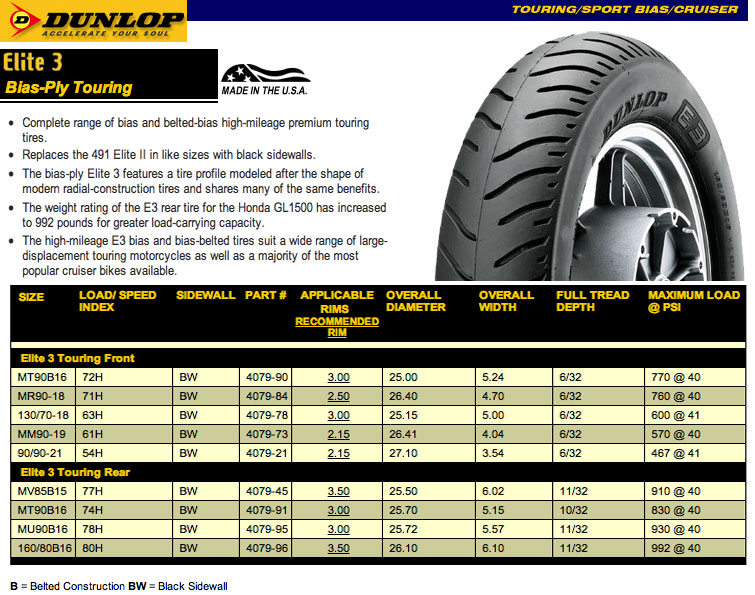
65 - Proportionality, i.e. profile height to width ratio. In our case, it is equal to 65%. Simply put, with the same width, the larger this indicator, the higher the tire will be and vice versa. Usually this value is simply called “profile”.
Since the tire profile is a relative value, it is important to consider when choosing rubber that if you instead of size 195/65 R15, if you want to put tires with a size of 205/65 R15, then not only the width of the tire will increase, but also the height! Which in most cases is unacceptable! (except when both of these sizes are indicated in the car's operating book). You can calculate the exact data on changing the outer dimensions of the wheel in a special tire calculator.
If this ratio is not specified (for example, 185/R14C), then it is equal to 80-82% and the tire is called full profile. Reinforced tires with this marking are usually used on minibuses and light trucks, where a large maximum wheel load is very important.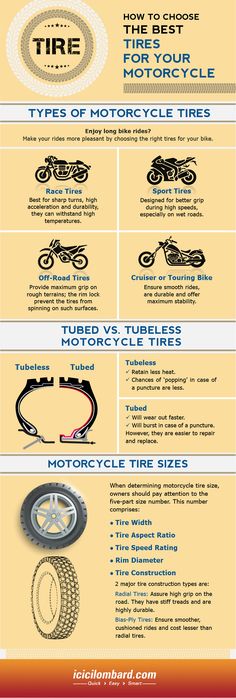
R - means a tire with a radial cord (in fact, almost all tires are made this way now).
Many mistakenly believe that R- means the radius of the tire, but this is the radial design of the tire. There is also a diagonal design (indicated by the letter D), but recently it has practically not been produced, since its performance is noticeably worse.
15 - wheel (rim) diameter in inches. (It is the diameter, not the radius! This is also a common mistake). This is the “landing” diameter of the tire on the disk, i.e. is the inside size of the tire or the outside of the rim.
91 - load index. This is the level of maximum permissible load on one wheel. For passenger cars, it is usually done with a margin and is not a decisive factor when choosing tires (in our case, IN - 91 - 670 kg.). For minibuses and small trucks, this parameter is very important and must be observed.
T is the tire speed index. The larger it is, the faster you can ride on this tire (in our case, IS - H - up to 210 km / h). Speaking about the tire speed index, I would like to note that with this parameter, the tire manufacturer guarantees the normal operation of the rubber when the car is constantly moving at the specified speed for several hours.
The larger it is, the faster you can ride on this tire (in our case, IS - H - up to 210 km / h). Speaking about the tire speed index, I would like to note that with this parameter, the tire manufacturer guarantees the normal operation of the rubber when the car is constantly moving at the specified speed for several hours.
There are two different American tire markings. The first one is very similar to the European one, only the letters “P” (Passanger - for a passenger car) or “LT” (Light Truck - light truck) are placed before the size. For example: P 195/60 R 14 or LT 235/75 R15. And another tire marking, which is fundamentally different from the European one.
Example: 31x10.5 R15 (corresponds to European size 265/75 R15)
31 is the outside diameter of the tire in inches.
10.5 is tire width in inches.
R - a tire with a radial design (older tire models were with a diagonal design).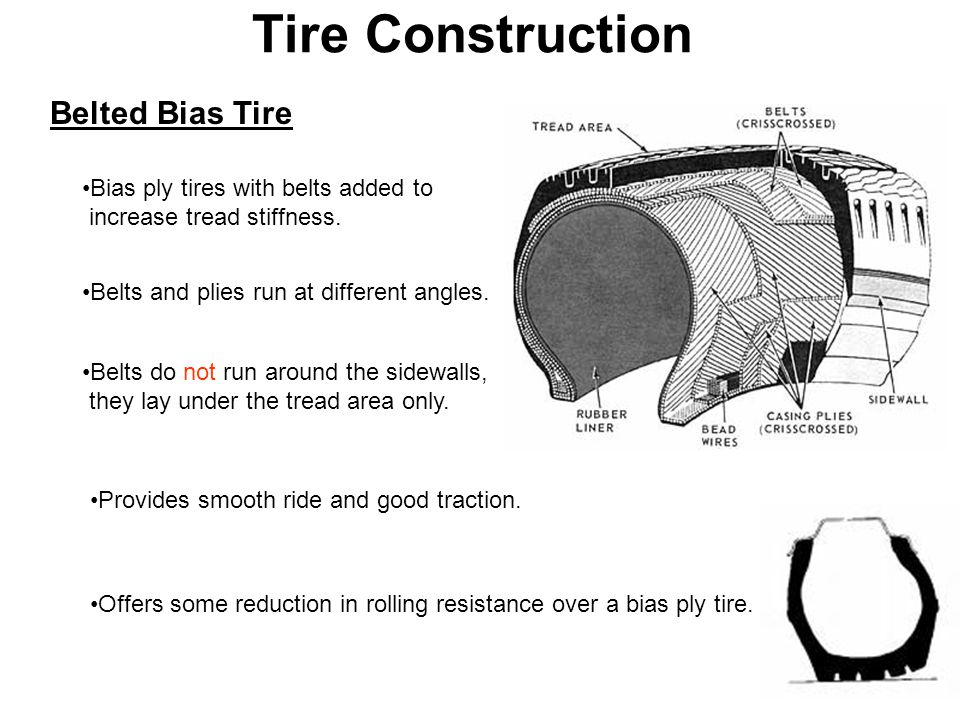
15 is the inner diameter of the tire in inches.
Generally speaking, except for inches that are unusual for us, the American tire marking is logical and more understandable, unlike the European one, where the height of the tire profile is not constant and depends on the width of the tire. And here everything is simple with decoding: the first digit of the standard size is the outer diameter, the second is the width, the third is the inner diameter.
XL or Extra Load is a reinforced tire, the load index of which is 3 units higher than that of conventional tires of the same size. In other words, if a given tire has a load index of 91 marked XL or Extra Load, then this means that with this index, the tire is able to withstand a maximum load of 670 kg instead of 615 kg (see the table of tire load indices).
M+S or tire marking M&S (Mud + Snow) - mud plus snow and means that the tires are all-season or winter. Many summer tires for SUVs are labeled M&S. However, these tires must not be used in winter, as winter tires have a completely different rubber compound and tread pattern, and the M&S badge indicates good flotation performance.
Many summer tires for SUVs are labeled M&S. However, these tires must not be used in winter, as winter tires have a completely different rubber compound and tread pattern, and the M&S badge indicates good flotation performance.
All Season or AS all season tires. Aw (Any Weather) - Any weather.
Pictogram * (snowflake) — rubber is designed for use in harsh winter conditions. If this marking is not on the sidewall of the tire, then this tire is intended for use only in summer conditions.
Aquatred, Aquacontact, Rain, Water, Aqua or icon (umbrella) Special rain tyres.
Outside and Inside ; asymmetric tires, i.e. It is important not to confuse which side is the outside and which is the inside. When installing, the Outside inscription must be on the outside of the car, and Inside on the inside.
RSC (RunFlat System Component) - RunFlat tires are tires that you can continue to drive a car at a speed of no more than 80 km / h with a FULL drop in pressure in the tire (due to a puncture or cut). On these tires, depending on the manufacturer's recommendations, you can drive from 50 to 150 km. Different tire manufacturers use different designations for RSC technology. For example: Bridgestone RFT, Continental SSR, Goodyear RunOnFlat, Nokian Run Flat, Michelin ZP etc.
On these tires, depending on the manufacturer's recommendations, you can drive from 50 to 150 km. Different tire manufacturers use different designations for RSC technology. For example: Bridgestone RFT, Continental SSR, Goodyear RunOnFlat, Nokian Run Flat, Michelin ZP etc.
Rotation or arrow This marking on the tire sidewall indicates a directional tire. When installing the tire, you must strictly observe the direction of rotation of the wheel, indicated by the arrow.
Tubeless - tubeless tire. In the absence of this inscription, the tire can only be used with a camera. Tube Type - indicates that this tire must be used only with a tube.
Max Pressure ; maximum allowable tire pressure. Max Load - the maximum allowable load on each wheel of the car, in kg.
Reinforced or the letters RF in the size (for example 195/70 R15RF) means that this is a reinforced tire (6 layers). The letter C at the end of the size (for example 195/70 R15C) indicates a truck tire (8 layers).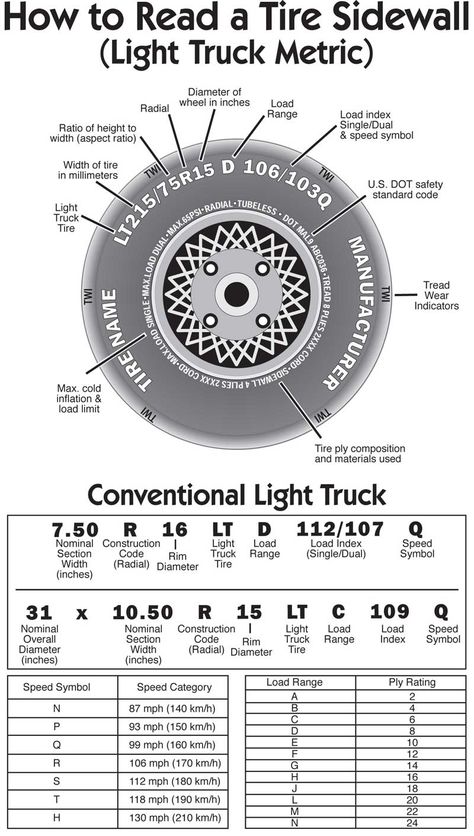
Radial this marking on the rubber in the standard size means that it is a radial construction tire. Steel means that there is a metal cord in the tire structure.
Letter E (in a circle) - the tire meets the European requirements of ECE (Economic Commission for Europe). DOT (Department of Transportation - US Department of Transportation) is an American quality standard.
Temperature A, B, or C Temperature resistance of the tire at high speeds on the test stand (A is the best).
Traction A, B, or C Tire wet braking capability.
Treadwear ; relative expected mileage compared to a specific US standard test.
TWI (Tread Wear Indiration) - tire tread wear indicators. The marking on the TWI wheel can also be with an arrow. Pointers are located evenly in eight or six places around the entire circumference of the tire and show the minimum allowable tread depth.